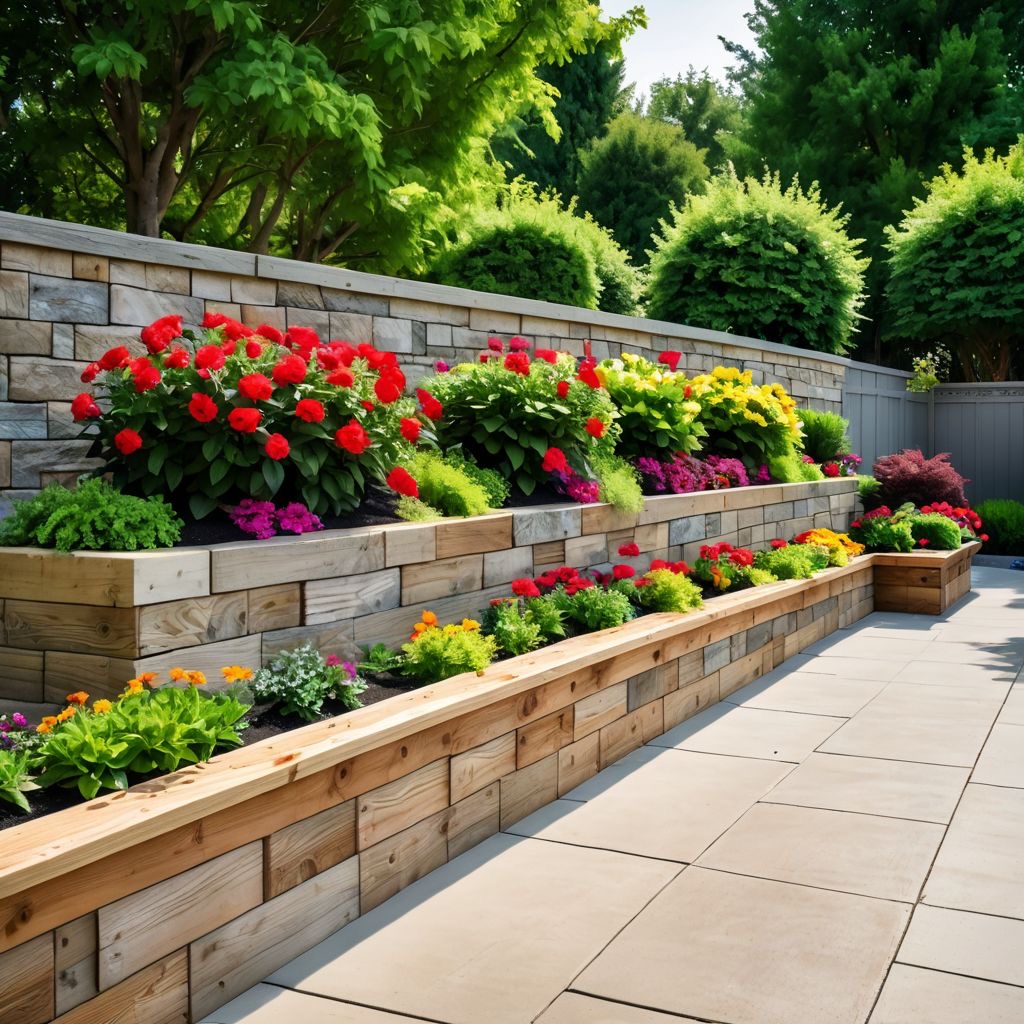
Table of Contents
1. Introduction
2. Understanding these Walls
- 2.1 What are They?
- 2.2 Engineering and Construction
3. Types
- 3.1 Gravity
- 3.2 Cantilever
- 3.3 Sheet Piling
- 3.4 Anchored
- 3.5 Pros and Cons of Different Types
4. Dos and Don'ts of Retaining Wall Installation
5. Alternatives
6. Role of Retaining Walls in Landscape Design Winnipeg-style
- 6.1 Aesthetic Contributions
- 6.2 Functionality in Yard Maintenance
- 6.3 Water Management
7. Versatility Beyond Soil Retention
8. Practical Tips for Homeowners
9. Conclusion
Introduction:
Welcome to the world of landscaping where the fusion of art and engineering gives your yard that extra oomph! If you're a homeowner in Winnipeg, you know that the right landscaping can make all the difference not just in aesthetics but in functionality too. And what better way to elevate your outdoor space than with the help of retaining walls? Picture this: a beautifully crafted wall that not only prevents soil erosion but also creates stunning multi-level gardens that beckon you to relax with a glass of lemonade. Intrigued? You should be!

In this blog post, we will dive deep into the captivating world of these structures and unravel their myriad benefits for landscaping Winnipeg-style. We’ll explore what retaining walls are, how they're constructed, and the plethora of types available, each offering unique advantages and disadvantages. Beyond the basics, we'll also delve into the aesthetic and functional roles of these walls in landscape design, covering everything from yard maintenance Winnipeg to enhancing your backyard landscape design.
Contact us today for your free estimate.
Whether you’re a keen DIYer embracing your inner Bob Vila or prefer to enlist the help of one of the many landscaping companies Winnipeg has to offer, this guide is packed with insights, practical tips, and expert advice that can transform your yard into the envy of the block. After all, in a city renowned for its stunning parks and vibrant neighborhoods, why shouldn’t your home be a part of that allure?
So grab your gardening gloves, a notepad, and maybe a snack (we know yard work is hard!), and let’s get this landscaping adventure underway!

Understanding Retaining Walls
2.1 What are they?
Simply put, they are a structure designed to hold back earth or soil and are especially useful in landscaping where slopes and uneven terrain are involved. Think of it as a superhero for your yard, bravely standing guard against gravity. More than just decorative enhancements, retaining walls are a critical component for any homeowner looking to level up their landscaping game or address potential erosion issues.
Retaining walls essentially create a barrier that allows for the management of land elevations, enabling you to create flat areas for planting, gardens, or patios. They provide interesting visual layers to an otherwise flat property and can be constructed from various materials, allowing for flexibility in design, functionality, and artistic expression.
2.2 Engineering and Construction
Constructing one isn't like throwing together a few garden stones and calling it a day; it’s a well-thought-out process commonly requiring engineering skills. Engineers need to analyze the land, assess drainage patterns, and ensure the material used can withstand various forces—namely, the weight of the earth and potential water pressure.
Generally, they are built with materials such as concrete, stone, or wood, and they're engineered to distribute the pressure exerted by the retained earth evenly. Proper drainage is critical, as accumulation of water can lead to catastrophic failure. French drains, weep holes, and proper grading all play significant roles in ensuring that the wall remains a steadfast ally in your landscaping endeavors.
During installation, it's essential to understand the specific soil conditions and water drainage patterns. Always work with a qualified professional if you’re uncertain about the technical magnitudes involved. A small miscalculation during design or construction can lead to long-standing issues later on.
Contact us today for your free estimate.
Read here about about City of Winnipeg permit requirements, contacting utilities and design tips.
Types of Retaining Walls
When it comes to types, it’s like choosing toppings for your pizza—there are plenty of options, each with its own pros and cons. Let’s break down the most popular types you can consider:
3.1 Gravity Walls
These walls rely on their own weight to resist the lateral loads from retained earth. Usually built from concrete, stone, or bricks, gravity walls have a wide base that tapers upwards, maximizing stability while minimizing the land consumption required for construction.
Pros:
- Simple design and relatively cost-effective.
- Highly durable when constructed properly.
Cons:
- May require more space due to the wide base, resulting in less actual yard space.
3.2 Cantilever Walls
A more modern option, these walls utilize a lever mechanism—where part of the wall extends out into the soil to counterbalance the weight exerted by the lateral earth loads. They are made of reinforced concrete and can be particularly effective when dealing with larger elevations.
Pros:
- Requires less material than gravity walls.
- Efficient for large heights without needing extensive width.
Cons:
- More complicated to construct, often necessitating professional help.
3.3 Sheet Piling Walls
Considered by many as the ultimate solution for heavy-load areas, sheet piling walls are made from long, thin sheets of steel, vinyl, or wood driven into the ground. They are effective for situations where space is constrained.
Pros:
- Ideal for tight spaces or when room is limited.
- Less expensive (relative to material used) than other options for steep slopes.
Cons:
- Limited aesthetic appeal compared to stone or brick walls.
3.4 Anchored Walls
These walls are anchored into the ground with cables or rods to provide added strength and support. They are particularly useful in high-load situations or areas with significant lateral earth pressures.
Pros:
- Excellent for extremely steep slopes and challenging terrains.
- Versatile in various conditions, often allowing for taller wall constructions.
Cons:
- Higher cost due to the need for anchors and specialized labor.
3.5 Pros and Cons of Different Types
| Type | Pros | Cons |
| Gravity | Simple, durable | Requires more horizontal space |
| Cantilever | Uses less material, space-efficient | Complex construction requires expertise |
| Sheet Piling | Ideal for tight spaces | Aesthetic limitations |
| Anchored | Great for steep slopes | Higher initial investment needed |
Dos and Don'ts of Retaining Wall Installation
The installation of one of these walls can take a DIY project from “meh” to magnificent, provided you follow proper guidelines. Here’s a list of Dos and Don'ts to ensure your new wall stands tall against the test of time (and powerful winds):
Dos
- Do Consult the Experts: Sometimes you just need to call in the pros. Searching landscaping contractors near will introduce you to landscape pros that can ensure that your wall is built to last, especially with Winnipeg’s unique climate and soil requirements (Winnipeg-style).
Contact us today for your free estimate.
-Do Plan for Drainage: Proper drainage will prolong the life of your retaining wall. Integrate weep holes and ensure surface water runs away from the wall, preventing water build-up.
- Do Use Quality Materials: It’s better to invest a little more upfront than to deal with the headaches of repairs later on. Quality materials can stand up to the elements for decades. Using inferior materials is rarely a good choice.
Don'ts
- Don't Take Shortcuts: Skimping on the foundational work might seem tempting, but a poorly-built wall can lead to expensive issues down the line, including structural failures.
- Don't Ignore Local Regulations: Check with your local government guidelines before you start—some neighborhoods have strict regulations about height and appearance for these walls.
- Don't Underestimate the Importance of Backfill: The quality and placement of backfill material are critical to the overall stability of the wall. Use proper fill material that is well-compacted to reduce movement.
Alternatives to Traditional Retaining Walls
While these traditional walls are fantastic, they aren't the only option available. If your preferences lean toward flexibility and creativity, consider these alternatives:
1. Terracing: Instead of a wall, construct several levels or steps. This approach not only looks fantastic but can also provide unique planting opportunities and mitigate erosion without the confines of a wall.
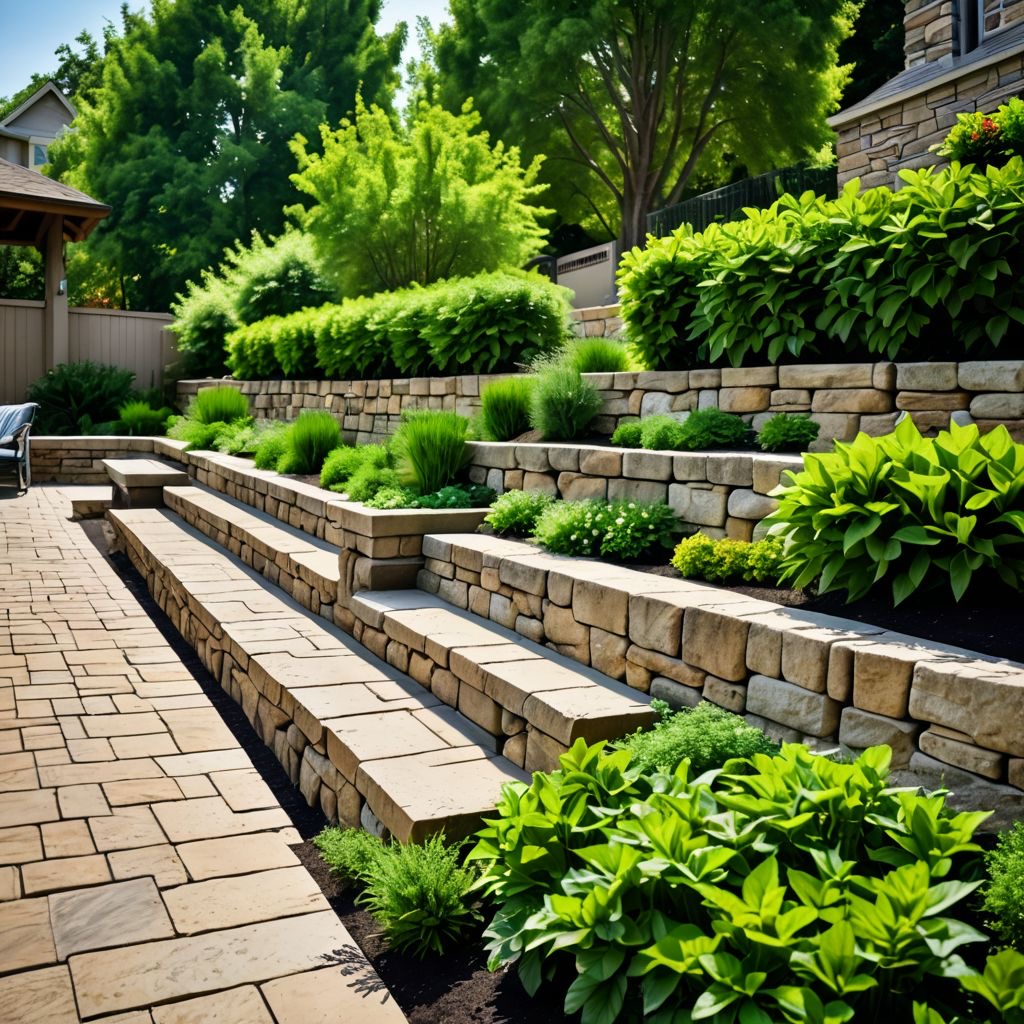
2. Boulders and Natural Stone: Rock formations can serve as a natural barrier while also providing rustic charm to your yard, seamlessly blending in with the natural environment.
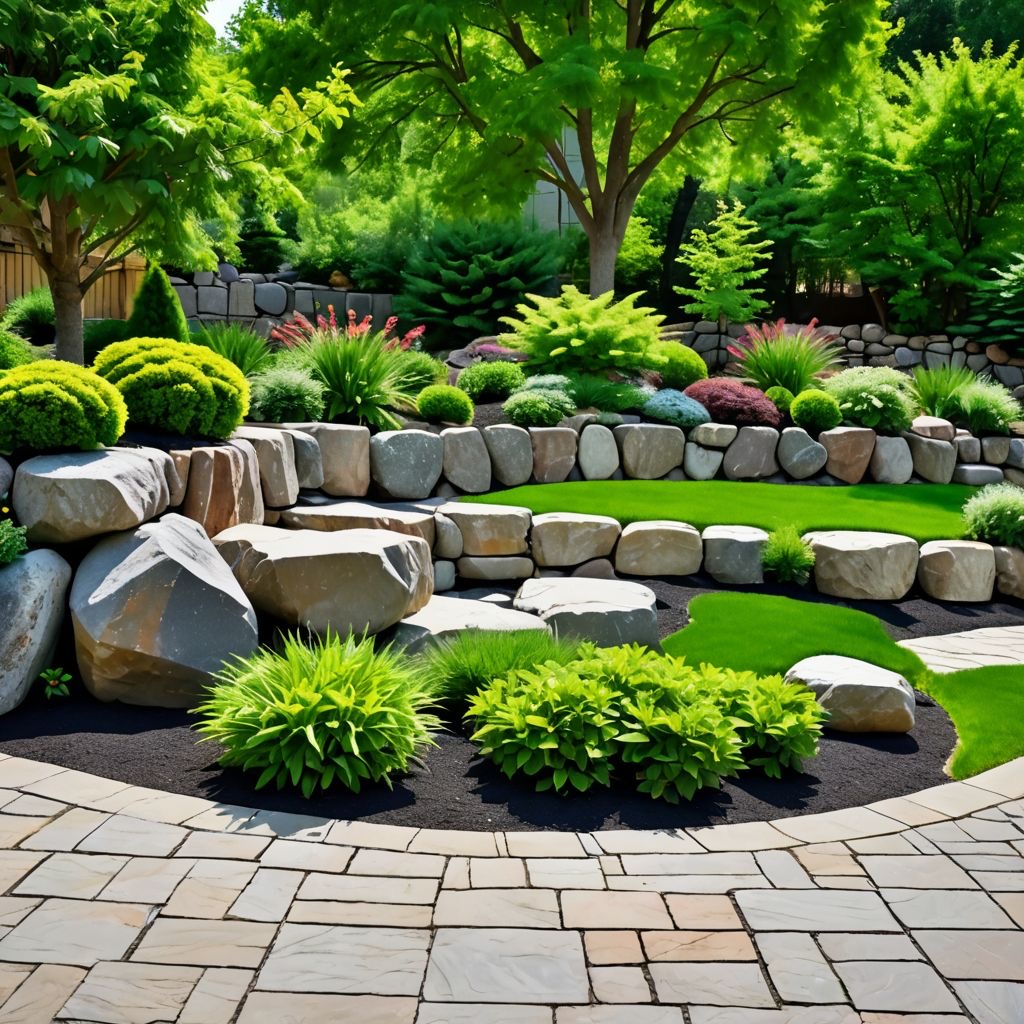
3. Vegetation: Sometimes, simply planting deep-rooting native plants can help stabilize slopes without the need for a wall. Plants such as rhizomes or grasses create a natural barrier while enhancing beauty.
4. Gabions: Wire cages filled with rocks that act both as retaining structures and decorative elements. They can be an eco-friendly choice that softens hardscape lines.
5. Living Walls: Vertical gardens in strategic areas can add greenery while also acting to reduce soil erosion in a more organic manner. Plus, they look fabulous!
Role of Retaining Walls in Landscape Design
It's easy to view these design elements merely as functional structures; however, they can also be significant in landscape design in other ways . Let’s dig into their multifaceted roles.
6.1 Aesthetic Contributions
They can transform an ordinary yard into an extraordinary outdoor oasis. They can create visual interest, define social spaces, and serve as decorative backdrops for planting areas or patios. Imagine hosting a summer BBQ on a well-designed patio surrounded by lush greenery that cascades down beautifully terraced walls—gorgeous, right? Not only do retaining walls provide definition to your outdoor space, but they also encourage the creation of various micro-environments, each with its own plants and features.
6.2 Functionality in Yard Maintenance
As a Winnipeg homeowner, incorporating retaining walls can help manage drainage issues, keeping your yard dry and preventing soil erosion. They can create stable planting zones, enhance your flower bed design, and generally assist in the overall maintenance of your yard—a significant consideration for anyone concerned with yard maintenance Winnipeg.
Contact us today for your free estimate.
Ready to chat about your garden and landscaping goals?

Reach out by call or text to: 204-229-9789 or click here to submit your information today to arrange a “no obligation” introductory phone call. We look forward to helping you transform your yard.
Tips on how to prepare for a consultation meeting with a landscape contractor
6.3 Water Management
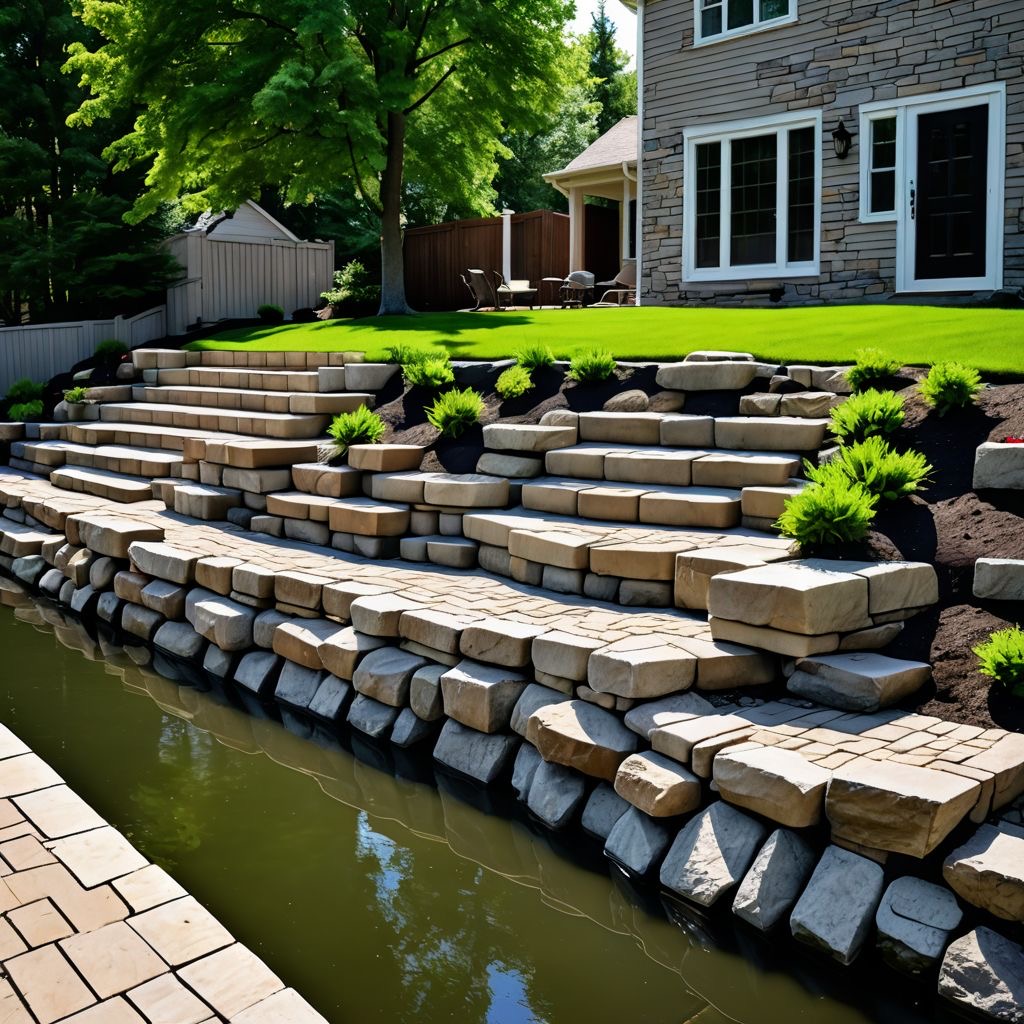
The proper use of retaining walls can help manage water runoff, thus reducing flooding risks and allowing for better control over water drainage patterns. Well-placed walls can effectively redirect water away from homes and other vulnerable areas, creating a more robust landscape that withstands heavy rains. Cracks in walls can often indicate longstanding issues with drainage—so consider this a win-win when tackling your landscape design.
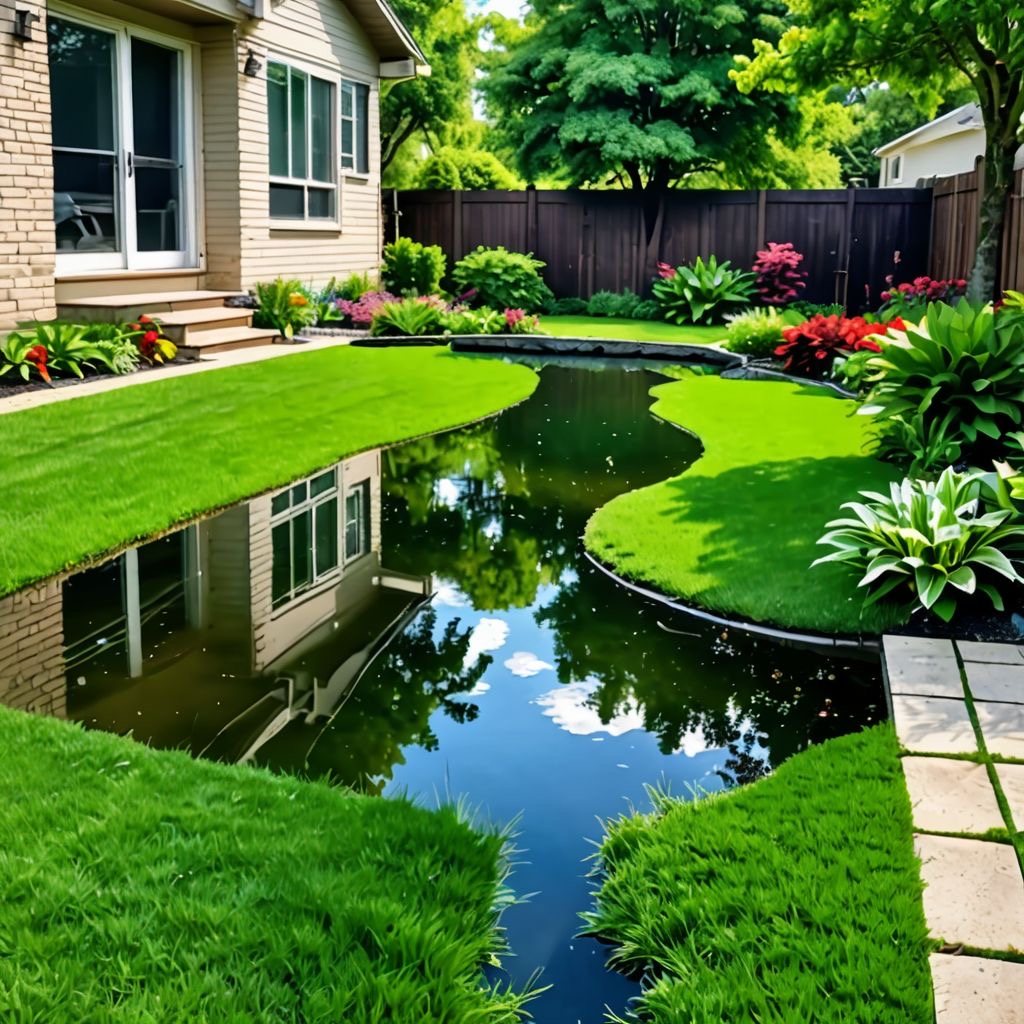
Versatility Beyond Soil Retention
While the primary role of retaining walls is to hold back earth, the versatility of these structures opens the door for many creative uses:
- Raised Flower Beds: Anchor your garden and showcase flowers or vegetables at a comfortable height, minimizing bending over to tend your plants.
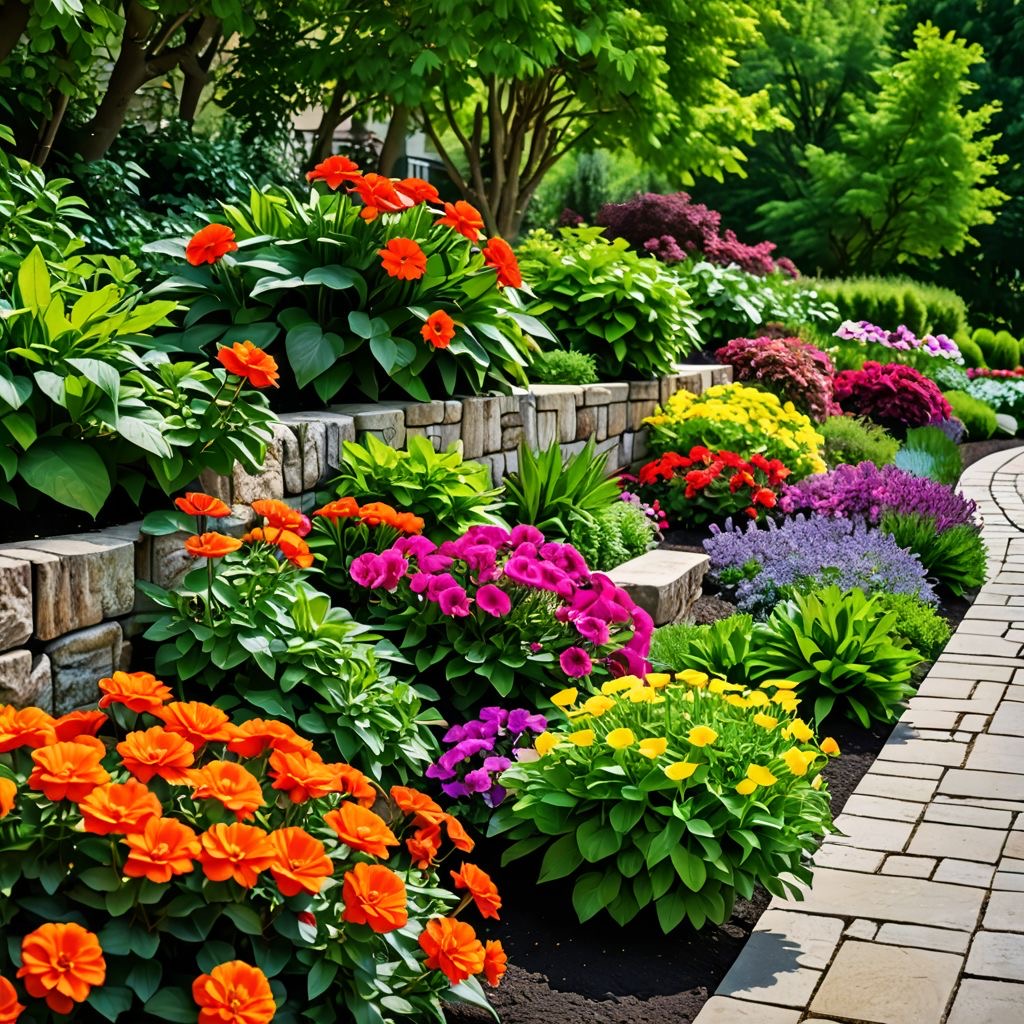
- Outdoor Seating: Transform a retaining wall into a cozy seating area for gatherings. Add some cushions for comfort or even integrate built-in benches for communal space.
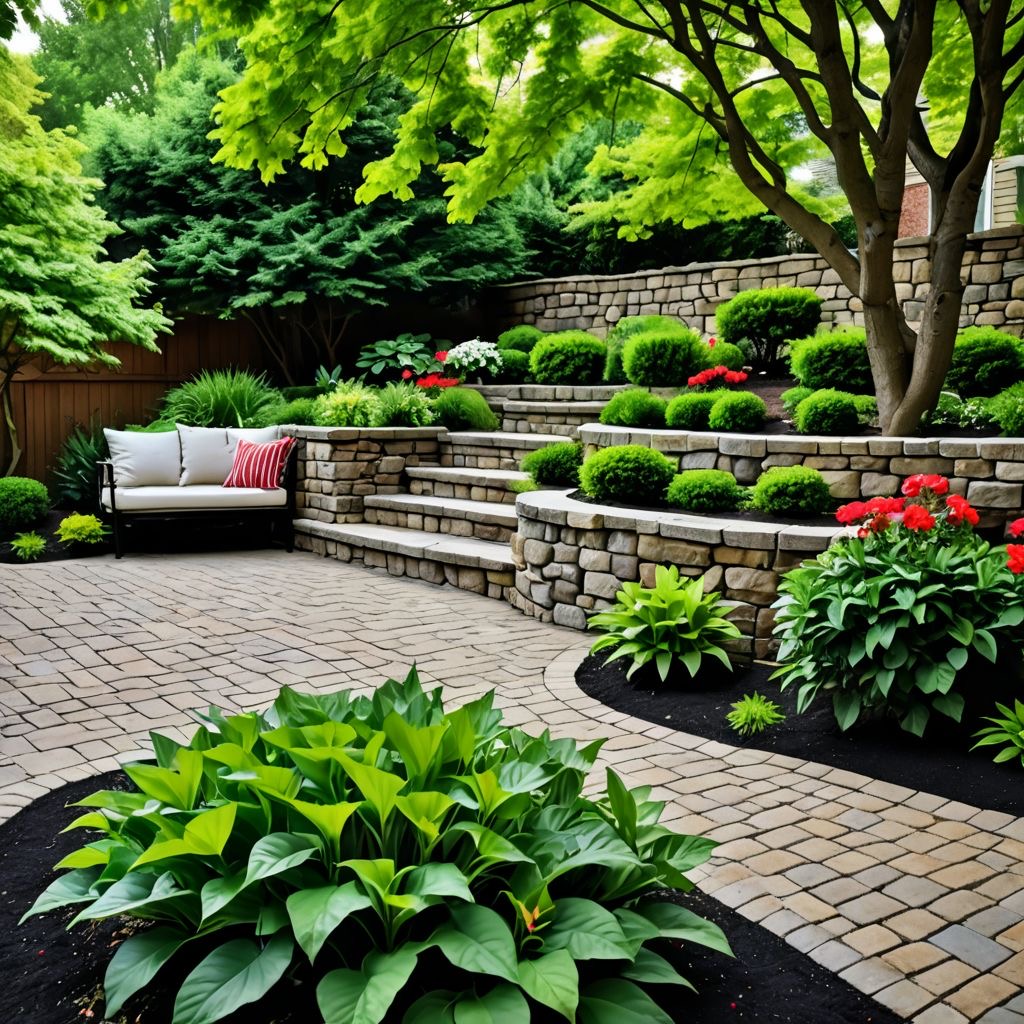
- Planter Boxes: Certain designs allow you to incorporate built-in planter boxes, merging structure and greenery seamlessly for added aesthetic appeal.

- Focal Points: Use a visually striking wall as a backdrop for outdoor art or a water feature to add a captivating element to your yard.
-Pathways and Steps: Incorporating retaining walls into pathways can offer a natural transition between different levels of your garden while guiding visitors through your intended landscape layout.
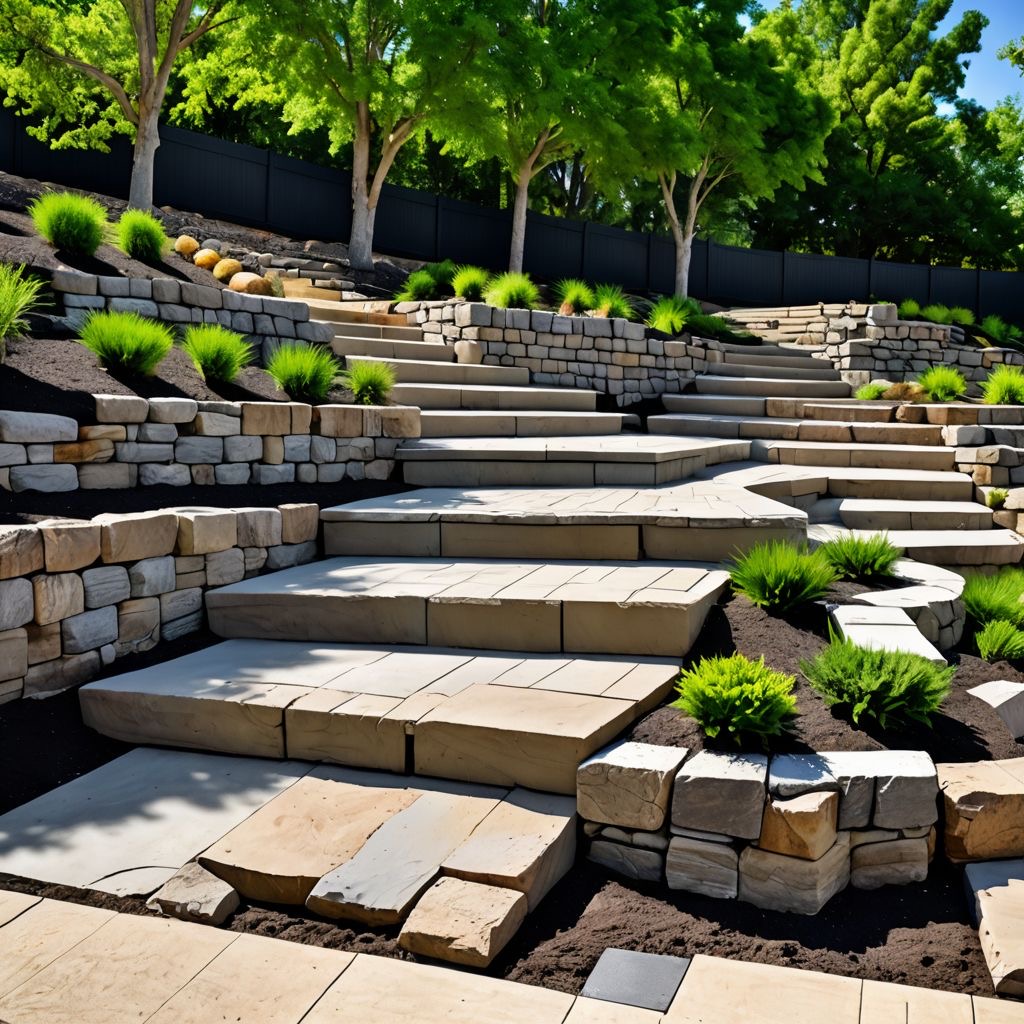
Practical Tips for Homeowners:
Ready to make your landscaping dreams come true? Here are some practical tips that can enhance your retaining wall experience:
1. Assess Your Needs: Understand the purpose of your retaining wall. Is it purely functional, or are you seeking aesthetics as well? Creating a detailed plan can save you time and frustration.
2. Choose the Right Material: Select materials that complement your home’s style and your personal preferences. Stone can offer a rustic vibe while concrete may convey sleek, modern aesthetics.

Contact us today for your free estimate.
3. Hire Local Expertise: When in doubt, don’t hesitate to reach out to landscaping contractors near me. Local experts understand Winnipeg's unique climate and soil type, which is vital for planning.

Tips on how to prepare for a consultation meeting with a landscape contractor
4. Plan for Integration: Consider how the design of your retaining wall will fit with existing features in your yard—like patios, pathways, or gardens.
5. Use Quality Fill Material: For any planting along the walls, ensure that the mix you use is suitable for the flora you wish to include. This will aid in maintaining your home garden design.
6. Don’t Skip on Ongoing Maintenance: Like any structural element, these need regular checks. Inspect for any signs of water damage or structural integrity issues—early detection is key!
7. Think Long-term: Consider how the landscaping and the wall will evolve over the years. Choose plants that will grow well in the space and envision the long-term beauty of your project.
Conclusion:
Investing in a retaining wall is more than just a cute addition to your yard; it’s a decision that encapsulates functionality, durability, and sheer beauty. For Winnipeg homeowners, the integration of these elements can elevate both your property's value and your enjoyment of your outdoor space. We’ve traversed the ins and outs of retaining walls, from their engineering principles to the various types, and finished with practical tips to help you on your journey to great landscaping.
In crafting a visually striking and functional yard,they do not merely serve a practical purpose but add a personal touch that speaks to your taste and style. So, whether you are considering a simple gravity choice or a more intricate anchored design, embrace the possibilities that come with these powerful elements in landscaping. Here’s to creating outdoor spaces that inspire—even if the only audience is your family and a few curious neighbors peeking over the fence!
**Cautionary Note** on Landscaping in Winnipeg:
As you embark on your landscaping journey in Winnipeg, it's crucial to recognize the importance of understanding local regulations and permits before you dig in. The city of Winnipeg has specific guidelines and requirements that govern landscaping projects, and navigating these rules can be a daunting task for even the most enthusiastic DIY homeowner. This cautionary advice aims to provide insight into what projects may require a permit, the potential frustration of the permitting process, and why hiring a professional landscape contractor may ultimately be your best option.
Contact us today for your free estimate.
Examples of Projects That Require Permits:
In Winnipeg, various landscaping projects necessitate specific permits from the city to ensure safety, environmental compliance, and aesthetic harmony. Common projects requiring permits include:
1. Major Grading or Site Alterations: If your landscaping plans involve changing the land's topography, such as extensive grading or earth moving, you will likely need a permit.
2. Retaining Walls: Building walls that exceed a particular height (generally over 1 meter) falls under regulations, as improper construction could lead to soil erosion or drainage issues.
3. Decks and Patios: Constructing a deck or patio that is freestanding or attached to a structure may require a permit, especially if it alters any designated utility easements. Decks that are designed to be more than 24 inches above the ground require a permit.
4. Fencing: While smaller fences and “Permitted Fences" may often be constructed without a permit, taller structures or those placed along property lines might need approval.
5. Water Features: Ponds, swimming pools, or significantly sized water features typically require permits to ensure they meet municipal safety standards.
6. Planting Trees: In some cases, planting trees within specific distances from utility lines or property lines requires a permit, particularly for larger species.
7. In Winnipeg, whether you need a permit for constructing a gazebo or pergola typically depends on a few factors, including the size, height, and style of the structure, as well as its intended use.
Gazebos
- Permits Required:
Generally, a gazebo that exceeds a certain height (often around 1 meter or 3.28 feet) or has a foundation may require a building permit. If it is considered a permanent structure and is within proximity to property lines or utility easements, you will likely need to seek approval from the City.
- Permits Probably Not Required: Smaller, portable gazebos or those that are less than a specific height (check local regulations for exact specifications) may not require a permit.
Pergolas
- Permits Required: Similar to gazebos, larger pergolas, especially those that are attached to a house or exceed height limits, may necessitate a permit. If they involve electrical work for lighting or fans, permits will also likely be required.
- Permits Probably Not Required: Smaller, freestanding pergolas often do not require permits, as long as they comply with local zoning regulations.
Projects That May Not Require Permits
On the flip side, many landscaping projects can be undertaken without the need for city permits. These include:
- Planting annual or perennial gardens
- Installing small-scale decorative features like bird baths or planters
- Adding mulch or gravel to garden beds
- Minor repairs or modifications to existing landscapes (dependent on local regulations)
Changes in Regulations:
It is essential to bear in mind that regulations and codes can and do, change over time. What may have been permissible last year could be subject to new rules today. For this reason, the best practice is to always check with the City of Winnipeg’s Planning, Property and Development Department before commencing any landscaping project, regardless of its scale. Up-to-date information can save you from potential fines or the need to redo work that doesn’t meet current standards.
Consider Hiring a Professional:
While the allure of a DIY project can be strong, it's important to acknowledge the intricacies involved in complying with city regulations. The permitting process can be time-consuming and frustrating, often leading to delays in your landscaping plans. Understanding the nuances of local laws, submitting the necessary documentation, and ensuring compliance can swallow up valuable time and resources.
By hiring a professional landscape contractor with expertise in Winnipeg's regulations, you not only expedite the process but also gain invaluable knowledge and experience that can enhance the quality of your project. Professionals often have established relationships with city officials and are familiar with the permitting process, thus minimizing potential hiccups along the way.
In conclusion, while landscaping can be an exciting and fulfilling endeavor, it requires careful consideration of local regulations and permits.
Always consult the city before starting any project, and consider the long-term benefits of hiring a knowledgeable professional familiar with local regulations to navigate these complexities for you.

